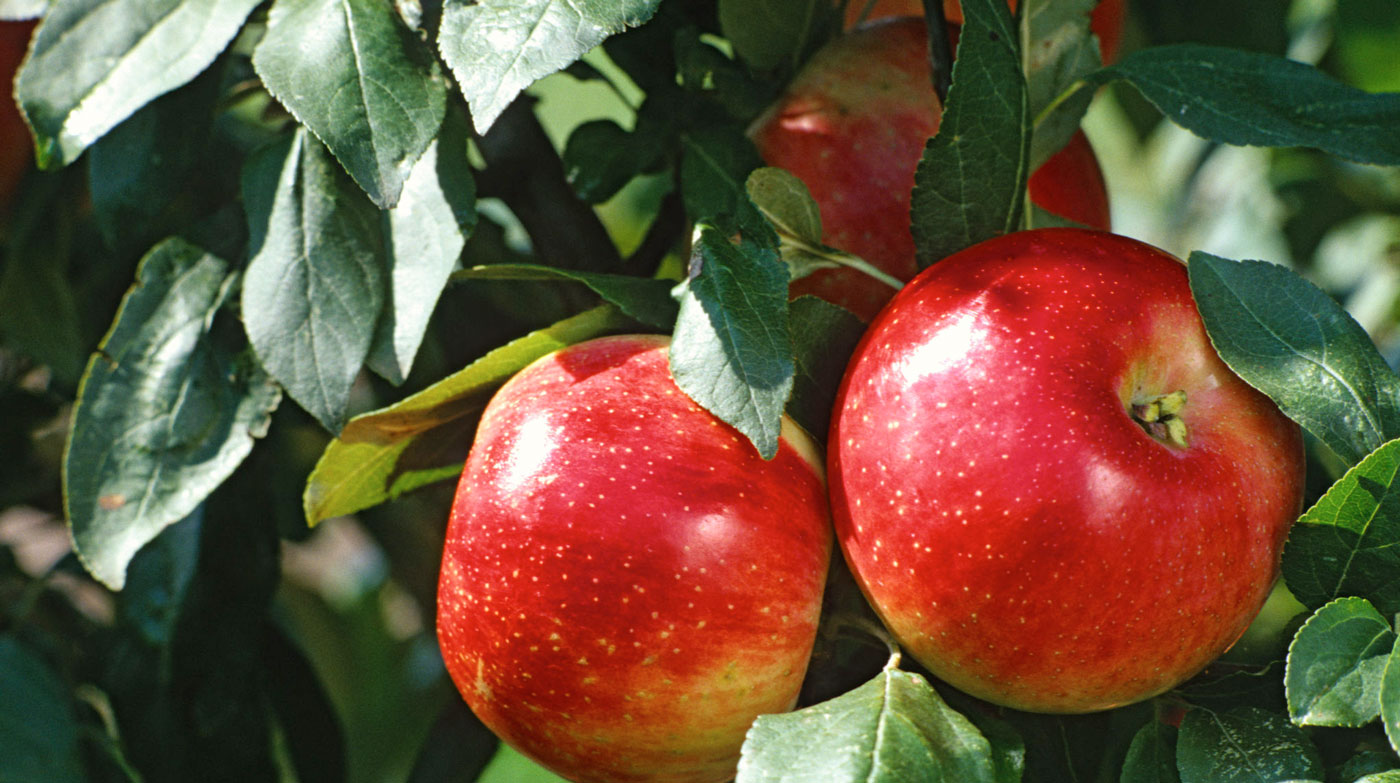Anyone can turn a sunny backyard into a luscious oasis with an orchard of dwarf trees. You don’t need a lot of ground to grow a small tree. Fruit trees can be grown in even the smallest of gardens. Put them in containers and surround your outdoor living space with pots of flowering and fruiting peach and apple trees. Even if you don’t live in a tropical climate, you can grow a miniature lemon or lime tree on your patio if you bring it inside during the winter
This year I planted a number of apple trees in my meadow with the intention of creating a hedge about 10 feet tall. For this, I didn’t plant the usual way, with trees about 30 feet apart. Instead, I chose bare root trees on dwarf rootstocks and planted them in a straight line. This hedge-like planting makes for easier pruning, easier watering, and easier harvesting, too.
Be sure to pick a rootstock that is suitable for your space. I recommend choosing trees on a semi-dwarfing or dwarfing rootstock. These are created using the old-fashioned technique of grafting. A scion (cutting or shoot from a desired plant) is grafted onto the rootstock of another plant, generally chosen for pest resistance, a specific stature, type of fruit, etc. You can even get plants with a variety of fruit grafted onto the same tree.

A dwarf fruit tree is one that will reach a maximum height of 10 feet tall and generally stretch 8 to 10 feet wide. They are easier than standard fruit trees to maintain, prune, spray, and harvest, and fit better into smaller home landscapes. The Willamette Valley is not known as apple country, but some trees do grow here. The apple variety I chose to grow is Braeburn, a crisp and flavorful apple with a nice balance of tartness and sweetness. Braeburn trees produce a very small apple, about the size of a tennis ball, on well-cared-for trees.
One destination for the little apples is school lunches. In this era of so much food insecurity, school lunches and breakfasts are of growing importance. School lunch providers have a challenge finding kid-sized fruits of any kind — smaller apples, tomatoes, and blueberries are almost always tastier and more desired among children than their larger relatives.
In general, dwarf fruit trees begin to bear fruit four or five years after planting, whereas standard apple trees can take as long as seven to 10 years to reach an age when they bear fruit. Small fruits require 6 to 8 hours of sunshine per day, although crabapples and elderberries are more suited to shaded spots. Shade will negatively impact fruiting potential and hardiness of the apple tree. Temperature matters too — fruiting trees thrive between 55 and 85 degrees Fahrenheit. Be sure to think about water and watering needs from the outset. Take steps to adjust the soil for good water retention or set up an irrigation system.
Interestingly, fruit trees thrive on being shaped and controlled. Annual pruning and thinning is helpful for maintaining desired plant size and productivity. Left alone, even dwarf trees could outgrow their space and become unproductive as they age.


